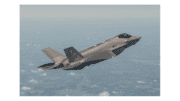Lockheed Martin announced in a press release on August 3 that they were transferring $4.9 billion in pension obligations and plan assets for approximately 18,000 U.S. retirees and beneficiaries to Athene Holdings.
This was accomplished through the purchase of group annuity contracts.
As a followup to the original article announcing the transaction, the Courier sought help from the faculty of Kennesaw State University’s Coles College of Business to explain this transaction in more detail.
Associate Professor Dr. John Abernathy, CPA, PhD, responded to our request and explained how group annuities work and why Lockheed Martin would buy them.
“The way all pension plans operate is that they contractually establish a set amount that they are obligated to pay to employees after retirement,” he wrote to the Courier in an email. “The company sets aside a pool of money each year and invests this money in stocks, bonds, real estate, etc. to meet that obligation.”
“The company then bears the risk of market fluctuations, life expectancy changes, etc.,” Abernathy said.
“In this case, Lockheed is taking all of its pension assets that it has set aside over the years and buying annuity contracts from Athene,” he said. “In return for this investment, Lockheed employees will receive a guaranteed return from Athene.”
How does a pension plan sustain itself?
Abernathy wrote, “Using simple numbers, if Lockheed had $1 million of pension assets and its obligation to retirees was $100,000, then it would need to earn 10% per year on its investments to meet that obligation (10% of 1 million = $100,000).”
“Sometimes it would earn more, sometimes less (this was a big issue in 2008, when markets crashed and pension plans lost large sums of money),” he said. “Clearly there is risk involved and Lockheed bears that risk and is responsible for making investments that meet its obligation.”
How do Lockheed Martin and Athene benefit from this transaction?
“In this transaction, Lockheed is shifting the risk to Athene. No matter what the market does, Athene is obligated to make the $100,000 payment each year,” Dr. Abernathy wrote. “Athene benefits because if they invest the money and earn $120,000, they pay out the $100,000 and keep $20,000. But again, Athene bears the risk of that, because if they invest and earn $80,000, they are still obligated to make the $100,000 payment and they’ll take a loss of $20,000.”
How will it affect retirees and beneficiaries of Lockheed Martin?
“From an individual beneficiary standpoint, there will be no change other than where their pension check comes from — Athene rather than Lockheed,” Dr. Abernathy said. “The amounts and timing should not change.”
How does it affect Lockheed Martin’s finances?
“From a financial reporting standpoint, Lockheed will record a large expense in 2021, but this isn’t necessarily cash that the company has to pay out, but rather a ‘trueing up’ of the market value of the assets that the pension plan held,” Dr. Abernathy wrote. “Furthermore, this is a charge that is one time and will not recur in the future.”





